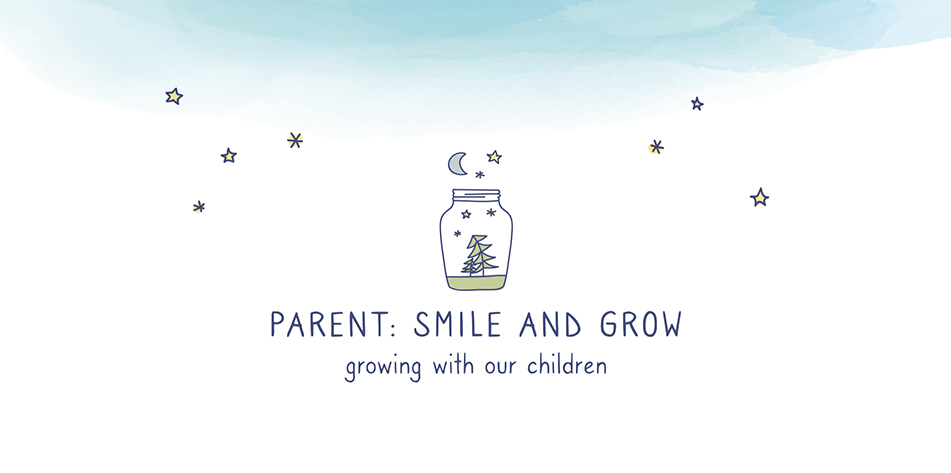Don’t be scared! You should do it in spite of fear! Brave men don’t listen to their fears. What if we should, on the contrary, learn to acknowledge fear in our lives, through our bodily feelings, and then use this information to take conscious action? Instead of just labeling fear as the bad guy? And more importantly: wouldn’t it be great if you could teach your child to maintain her instinctive connection to her feelings and help her use her natural curiosity to embrace fear in her life?
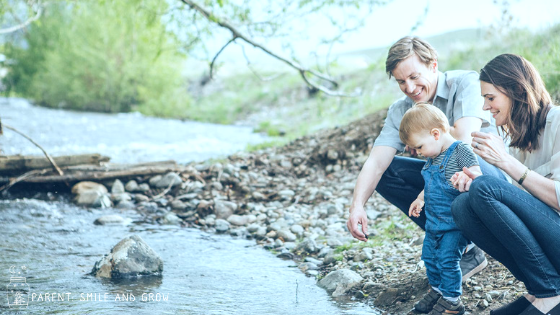
Photo courtesy of Emilie Hoffman
Table of Contents
An interview to understand how we can help our child embrace fear
I’m glad and honored to host an interview with Emilie Hoffman, coach, pilates instructor, and creator of the mind/body coaching method “Science meets soul”.
I just love her approach. It consists into creating a deeper connection with our body and our feelings, in order for us to understand more deeply our inner selves – our needs, our emotions, our values.
The underlying belief is that, once we are able to establish a healthy relationship with ourselves, we are then able to build healthy relationships with our world.
I strongly recommend that you go check her website, https://sciencemeetssoul.co/.
She shares amazing insights about all the science behind emotions and feelings and the connection with our body and our actions.
In one of her recent newsletters, Emilie wrote something about fear that resonated deeply with me: how can we know when fear is holding us back from something that would make our lives better, and when is it a healthy signal from something that is dangerous for us?
We so often tend to think about fear as something bad, just as we do with anger. But in reality, those are just neutral, basic and very important emotions: they send us useful information we shouldn’t ignore, but learn to interpret, in order to guide our actions in a way that feels good to us.
While I was reading, I couldn’t help but thinking about the way we teach our kids to deal with those emotions.. Very often, it’s based upon our own experience as children more than a reflected, conscious approach.
And that’s where I thought about this interview! I’m so grateful that Emilie accepted to contribute to this topic and help us parents better understand how we can guide our kids into a healthier relationship with fear.
The 2 questions we should ask before we can help our child embrace fear
Kids are all different, we all know that; and their fear may have a different trigger and different intensity.
It’s hard sometimes for us parents to find the right balance between:
-
need for encouragement – when we know they can push their limits a little more and learn from experience;
-
and a healthy fear – when the kid really feels overwhelmed.
Not to count when our own fears comes into play. I find myself at times preventing my children from trying because I’m scared, whereas my kids are confident and would “jump in”.
Emilie, which reasoning do you suggest? How should we guide our thoughts in these cases, when we not only have to understand ourselves, but we also need to understand our kids’ feelings and possibilities?
#1. What’s the intention behind our actions?
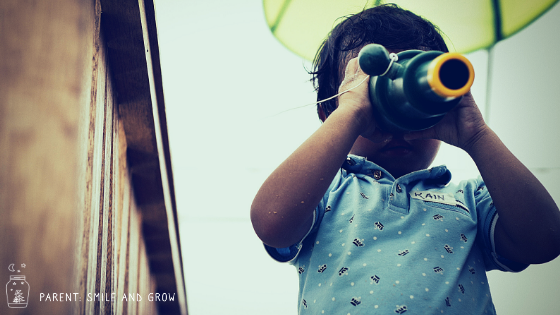
Photo by Joseph Rosales on Unsplash
In my experience as a parent, I find that the times I’m most controlling of my child are when I have in my head my own story about what he’s about to do and why without checking with him.
If I’m not feeling curious, I’m probably missing something about what’s going on inside both of us.
My son is not even two yet, so sometimes it’s pretty hard to get his version of the story, but it’s important to try!
What are your kid’s intentions in the actions they are about to take?
There are lots of different ways to carry out the same intention and it’s really helpful to walk through their version of how they expect a situation to unfold.
Whether you are a kid or a grown up, you often get what you expect.
#2. What are you feeling in your body?
Find out how your child is feeling in his or her body to see if they are still feeling grounded or not:
-
Some butterflies in the stomach but still able to think clearly, ask playful questions, and take deep breaths is a sign that it’s probably an adventurous level of fear.
-
But if your child feels really tense; can’t find a deep breath; and starts to lose touch with his/her surroundings, it’s time to pull back and find a sense of security again.
A sense of internal security will help us push our limits in a way that helps us learn.
Without an internal sense of security, pushing our limits just shuts us down. It keeps us from being curious or playful about anything.
Children are amazing examples of what learning can look like: it’s creative, challenging, imaginative, and integrated in mind and body.
When we can still tap into our curiosity, situations feel a little exciting and fun to us, even if we are nervous!
But in a fear that is too much for our brain and body, we don’t feel that excitement, and we do not have curious thoughts.
Instead, we usually feel overcome with tension and the urge to be defensive, run away, or crumple.
If you can’t already tell, I value curiosity highly. One of my top priorities as a parent is to help my child satisfy his curiosity and stay safe at the same time by altering the environment or physically guiding him to help mitigate risks that are too big.
If he goes beyond a point where he is terrified rather than curious, I am there to provide a safe, stable center that he can come back to and rely on to help him change his situation.
Help your child embrace or ignore fear?
A few months ago, I brought my two kids skiing. It wasn’t the first time, but we hadn’t been on the snow for a long time.
I had planned to carry my 3-year-old between my legs, and to have my oldest daughter, 5 and a half, go on her own by my side – I obviously picked a baby slope.
At my astonishment, my son would just throw himself down the slope without waiting for me (putting himself into danger) while my daughter was stuck with fear.
I didn’t know what to do, because she would grab my legs and cry, while I had to follow my little one (who obviously didn’t wait for me and was dangerously skiing on his own).
I then told my daughter : “I know you’re scared, it’s normal to be scared, you’re doing something new and you don’t know how to do it. Fear is like an alarm bell. But I’m here with you, and the only way for you to learn is to go even if you’re scared, and I’ll stay with you.”
This is just an example of many situations we may face as parents, where we would like our kids to go beyond their fears because we feel that if they just try, they’d gain confidence and see they can do it.
After reading your article, I start thinking that maybe, that wasn’t the right thing to say.
Which words can we use when our kids panic, for them to learn when and how they can trust themselves, their body, their instincts; and when they can let go and just try?
Is there truly only one way?
Well, I’d like to ask you a question about your focus in the situation…In the little bit of story you share here, it sounds like you were making the focus for your daughter about her needing to ski; but in reality perhaps your main focus was about you needing to be with her brother.
Is it possible part of her discomfort was from sensing the disconnect between what you were saying to her and what you were expressing in your actions and personal energy?
I’d also like to challenge all of us (self included!) to really pause when we say there is only “one way” or “one truth” or “one possibility”; because more often than not, there are lots and lots of options available to us! We have a lot more choice than we think we do.
Realizing that we have choices and that we are allowed to make our choices on our own terms is very empowering!
Sometimes that realization alone can ease fear that feels overwhelming.
The power of choice
Close your eyes and imagine the following scenarios:
Notice what your body does when somebody you trust and respect says to you: “You MUST do it THIS way.”
Then, notice what happens to your body when the same person says: “We can come up with some options of how to do this together and you get to decide on the approach we take.”
Which scenario do you think would be most helpful in empowering your daughter to quiet her own fear and learn a new skill with confidence and enthusiasm?
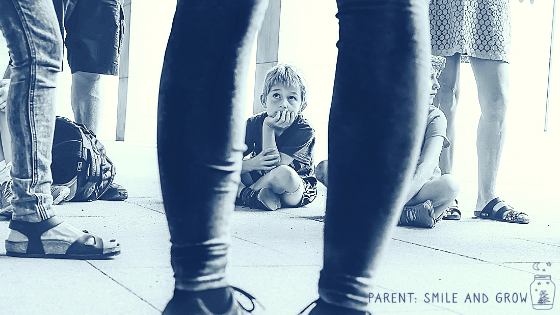
Aside from our kids, it is so important that we do this for ourselves too. When you feel pressure and fear at the same time, see if you can find more personal power by creating different options for yourself and establishing space for you to make your own personal decisions.
Connected: the power of choice to get your child’s cooperation
5 steps to learning the value of curiosity if you want to help your child embrace fear
On the same note: what can we do to support our children into learning that fear isn’t bad, but to interpret what it tells us? Can you also give us some practical examples of it?
#1. Fear is ok: give yourself permission to seek safety
In my own life, and the lives of many people I’m close with, giving ourselves permission to seek safety and security is so important to trusting ourselves and being resilient. Humans are not robots and we’re not invincible!
We’re squishy social animals who need a sense of security in order to thrive.
So, the first thing we can do for our kids is let them know that fear is normal, okay, and useful! It doesn’t mean you are “weak.” It means you are perceptive!
We aren’t meant to dive into every situation we meet. Sometimes it’s good for us to say no.
#2. Learn to recognize the symptoms in your body
Our brains, bodies, and nervous systems are so clever in their ability to know what we have the skills to handle, and what we don’t.
We get the automatic message: “You don’t yet have the skills you need!” when we feel the body sensations that come along with fear.
As a practical example in my own body, I’ll notice when my breath gets shallow. I’ll take a pause to rewind my thoughts and see what crossed through my mind right before I felt the tightness in my chest.
I know that this is a time when I have a great opportunity to either:
-
practice new skills I’m in the process of learning,
-
or identify a skill gap so I can get help to learn what skills could help me here.
#3. From skills to habit – it’s ok to ask for help
These days, fear pops up most frequently for me in two places: business money stuff, and marriage.
I have learned so many skills about relationships in the past several years. I really do know a lot now!
But, not all of those skills are integrated as habits.
So when I’m aware of my body shifting from a calm, alert, warm and bright state to a rigid, tense, vigilant and hyper-focused state in those two areas, I pull out my notes about what I already know and probably need to practice.
If I hit a bump and I really don’t know what to do and I’m feeling very avoidant, that’s a sign I need to reach out for help and let someone else teach me a few new ideas!
When I have help, my curiosity comes back and I can begin to empower myself.
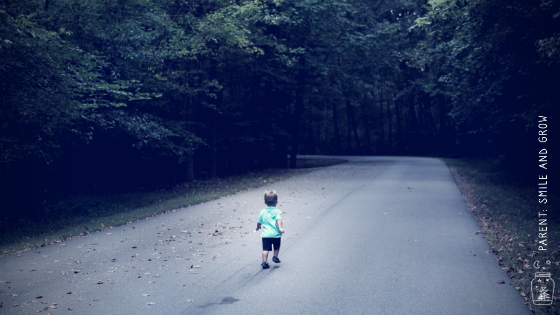
Photo by Emma Frances on Unsplash
#4. Let your child’s natural curiosity guide and help him embrace fear
In the case of my toddler, I let his curiosity guide. He’s too young to talk to me about body feelings or emotions; but he can assert his likes/dislikes and desires very clearly.
We have air conditioning in our house and there is a fan unit on the side of our house in the back yard. My son is a bit wary of it.
Whenever we play in that part of the yard, he will always listen for the fan and tell me: “air conditioner fan off!” or “fan turned on.”
He’s not completely comfortable with it yet; but each time I notice him checking on the unit, I ask him if he wants to get closer.
Sometimes he says yes, and sometimes he doesn’t. If he says no, I’ll ask him if he wants me to pick him up and carry him to a place where he can see the fan, but doesn’t have to be too close.
There’s a garden bed (my son calls it the dirt box) on the far side of the AC unit. When the fan was on, he used to say “no” when I asked if he wanted to play in the “dirt box”, because he was too scared to walk past it at all.
Now he goes past it to get to the dirt box if I’m there too; and he’s started talking more freely about the AC fan.
“Fan goes around and around!”
His curiosity is helping him engage and find his own sense of security in his relationship with the air-conditioning unit.
It’s a serious and important process for him, even if it’s “just an air-conditioning unit” to us grown-ups.
#5. Protect their sense of security
That’s the same approach I use for all situations I sense my son is feeling fearful.
There’s no rush for him to push through circumstances that undermine his sense of security; because in the long run, it will just make fear an even scarier feeling for him to experience.
I want him to know he can work with his fear, that he doesn’t have to be overwhelmed by it.
Let your kids embrace fear and reconnect
As adults, we’ve very often grown in a way that disconnects us to ourselves and our bodies. That’s why you created your activity in the first place, right? Rebuilding this confidence and alignment within ourselves is not always an easy job. What can we do, while we’re still on the path towards a better understanding of ourselves, to help our children grow in a more “connected” way? (And I’m obviously not thinking about the internet 😉 )
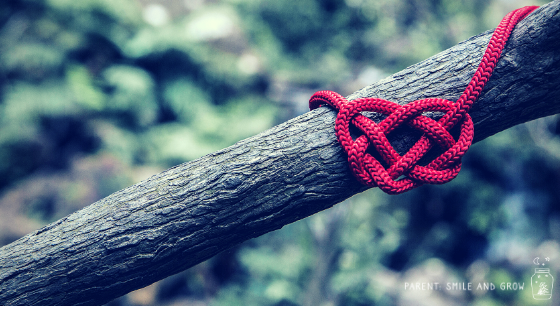
Reconnecting with our feelings in 3 questions
Hahah…very clever, Clio!
I love asking the following questions mindfully throughout the day:
- How does your body feel?
- What do you think that feeling is saying to you?
- How can you respond kindly and quickly to the message?
For most of us adults, we’ve lost touch with what we’re feeling! And because we’ve lost touch with what we feel, we aren’t even asking the other questions.
Many adults end up knowing very little about themselves. They experience a lot of self-doubt simply because they don’t realize the brilliant messages they are sending themselves; and they don’t give themselves a chance to respond.
I believe in teaching our children that their physical feelings are very important because our thoughts, feelings, and behaviors are all woven together.
The feelings that arise within our kids will be the root of their wellness, their emotional experience, and their intuition.
Our kids will have great trust in us and trust in themselves the more we model asking and answering the three questions. “How does your body feel? What do you think that feeling is saying to you? How can you respond kindly and quickly to the message?”
Resources
A few useful resources for you to dig deeper if you want!
Note: some links may be affiliate links. It means that if you buy something after clicking, I might get a small commission. All opinions are my own.
-
First and foremost, go check Emilie’s website and blog. She has a powerful insight and by the way, she offers free discovery calls so if you’re curious about her working method, that’s your chance!
-
This article offers another great description about how to use fear in a way that’s healthy and beneficial.
-
“The gift of fear and other survival signals that protect us from violence.” goes deeper into boundaries setting, and how they can keep us safe.
